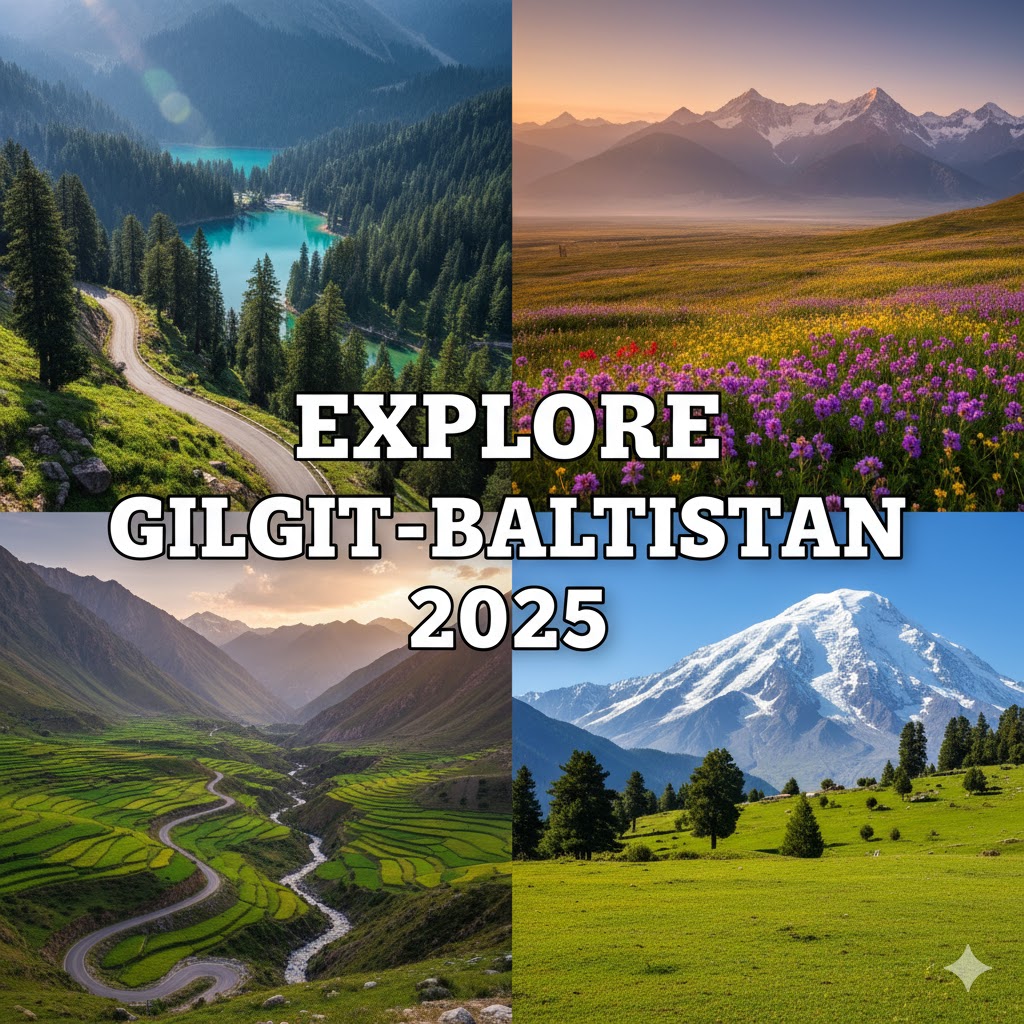Discover Gilgit-Baltistan Scenic Routes 2025
Gilgit-Baltistan is often called the crown jewel of Pakistan’s north, and for good reason. With towering peaks, pristine rivers, and lush valleys, this region is a paradise for travelers and photographers alike. Exploring its scenic routes is not just about reaching a destination — it’s about experiencing nature at its most breathtaking, with winding roads that reveal some of the world’s most stunning landscapes.
Whether you’re planning a road trip, a motorcycle adventure, or a trekking expedition, these top scenic routes in Gilgit-Baltistan promise a journey as memorable as the destinations themselves.
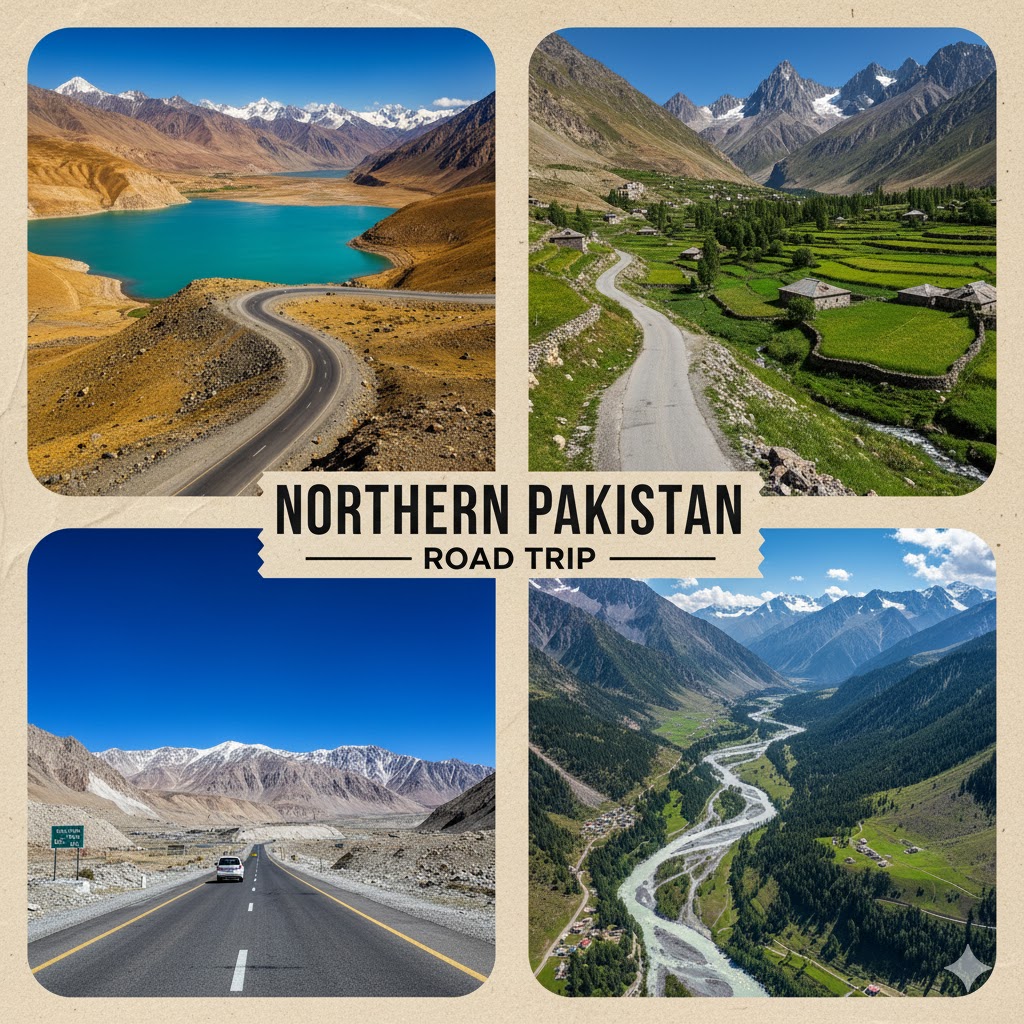
1. Hunza Valley Road: Karakoram Highway to Attabad Lake
The Hunza Valley Road is one of the most famous scenic routes in Gilgit-Baltistan. Starting from Gilgit city, this route takes travelers along the Karakoram Highway, winding through mountains, rivers, and orchards. The road is dotted with villages where you can experience local culture and hospitality.
Highlights:
- Attabad Lake: A turquoise lake formed after a landslide in 2010, offering boating and lakeside photography opportunities.
- Passu Cones: Majestic pointed peaks that appear along the highway, perfect for nature photography.
- Karimabad: The main town of Hunza, rich in cultural heritage and local handicrafts.
- Eagle’s Nest: A viewpoint offering panoramic views of Hunza Valley, ideal for sunrise and sunset photography.
Hidden Gems:
- Small villages along the road like Gulmit and Gulkin, known for their traditional architecture.
- Local apricot orchards, where travelers can taste seasonal fruits.
Local Tips:
- Best visited in April to October for clear skies.
- Road can be slippery in winter due to snow and ice.
- Try local Hunza cuisine such as Chapshuro and Apricot Jam.
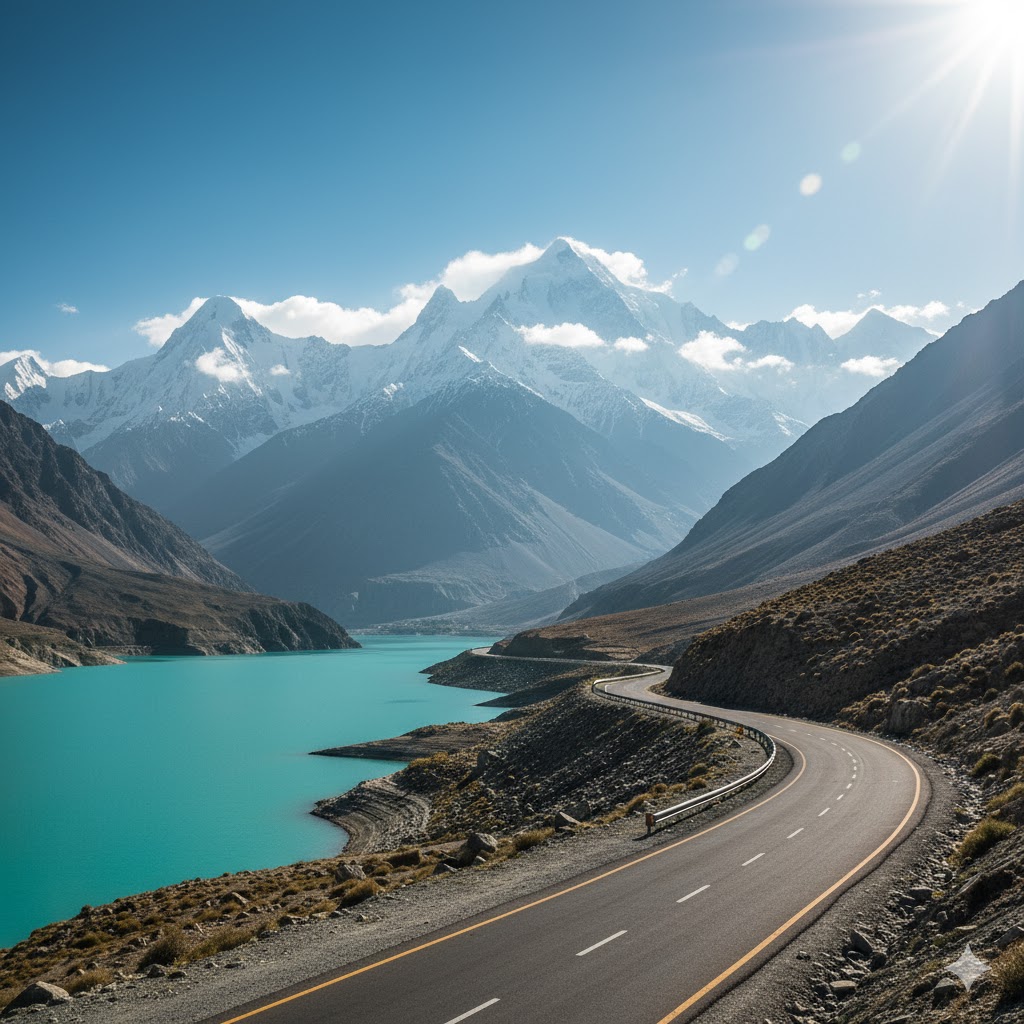
2. Skardu Road: Gilgit to Skardu
The road from Gilgit to Skardu offers one of the most adventurous drives in Pakistan. It passes through mountain passes, valleys, and the Indus River, giving travelers a sense of the rugged beauty of Gilgit-Baltistan.
Highlights:
- Shangrila Lake (Lower Kachura Lake): Famous for crystal-clear waters surrounded by snow-capped peaks.
- Satpara Lake: Known for fishing and boating opportunities.
- Skardu Town: The gateway to the K2 base camp, with bustling markets and local cuisine.
Hidden Gems:
- Katpana Desert: The cold desert of Skardu, where sand dunes meet snow-capped peaks.
- Small rural villages that showcase traditional Balti architecture and culture.
Local Tips:
- Check weather conditions before traveling; roads can be blocked due to landslides.
- Overnight in Skardu town to rest before exploring upper valleys and lakes.
- Use local guides for treks to nearby attractions like Deosai National Park.
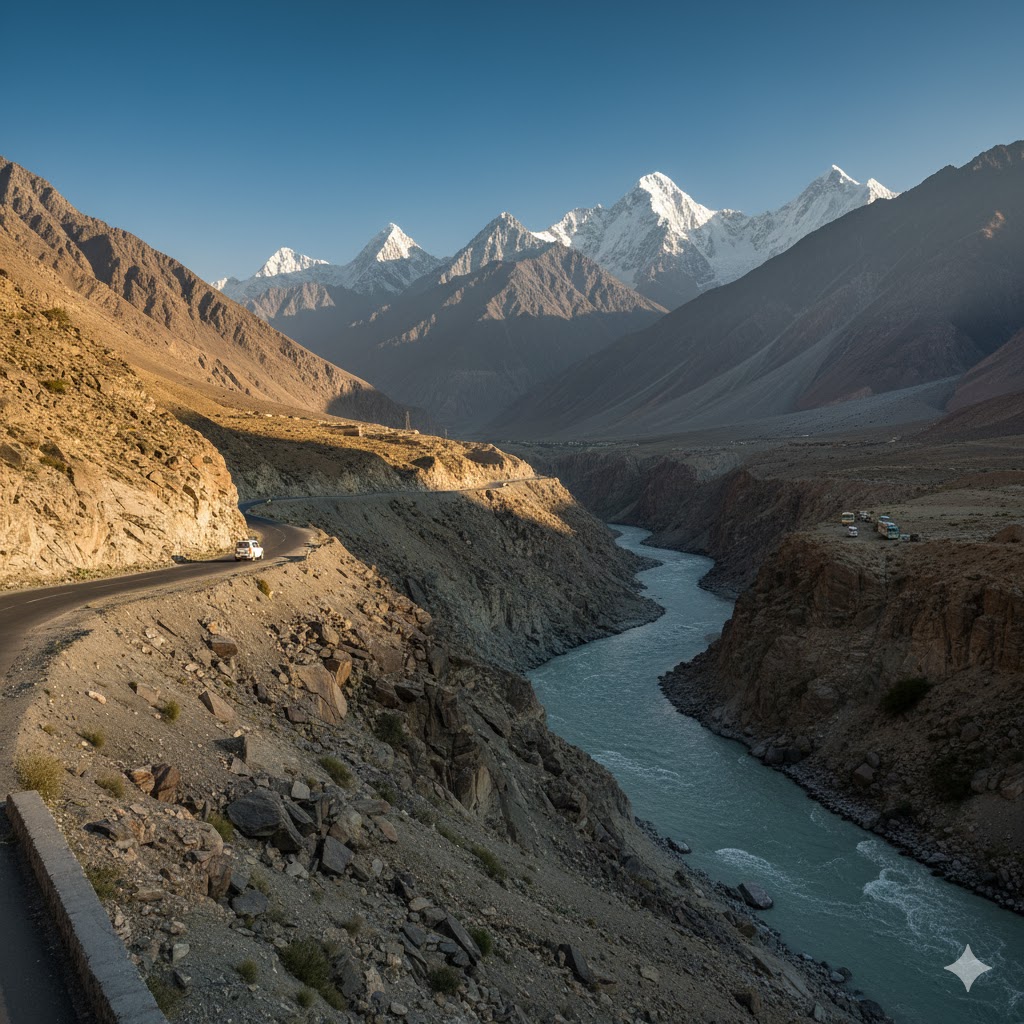
3. Naltar Valley Route: Gilgit to Naltar
Naltar Valley is renowned for its dense forests, alpine lakes, and ski resorts. The route from Gilgit to Naltar passes through lush green meadows, pine forests, and small streams, making it a favorite among nature lovers.
Highlights:
- Naltar Lakes: A cluster of high-altitude lakes with turquoise waters.
- Ski Resort: Naltar is home to one of Pakistan’s only ski resorts, perfect for winter sports enthusiasts.
- Wildlife: The valley is home to ibex, snow leopards, and a variety of bird species.
Hidden Gems:
- Trekking trails to Shandoor Lake and surrounding peaks.
- Local villages where you can experience Balti culture firsthand.
Local Tips:
- Summer months (June–September) are ideal for visiting Naltar.
- Roads are narrow and mountainous; a 4×4 vehicle is recommended.
- Carry warm clothes even in summer, as evenings can be chilly.
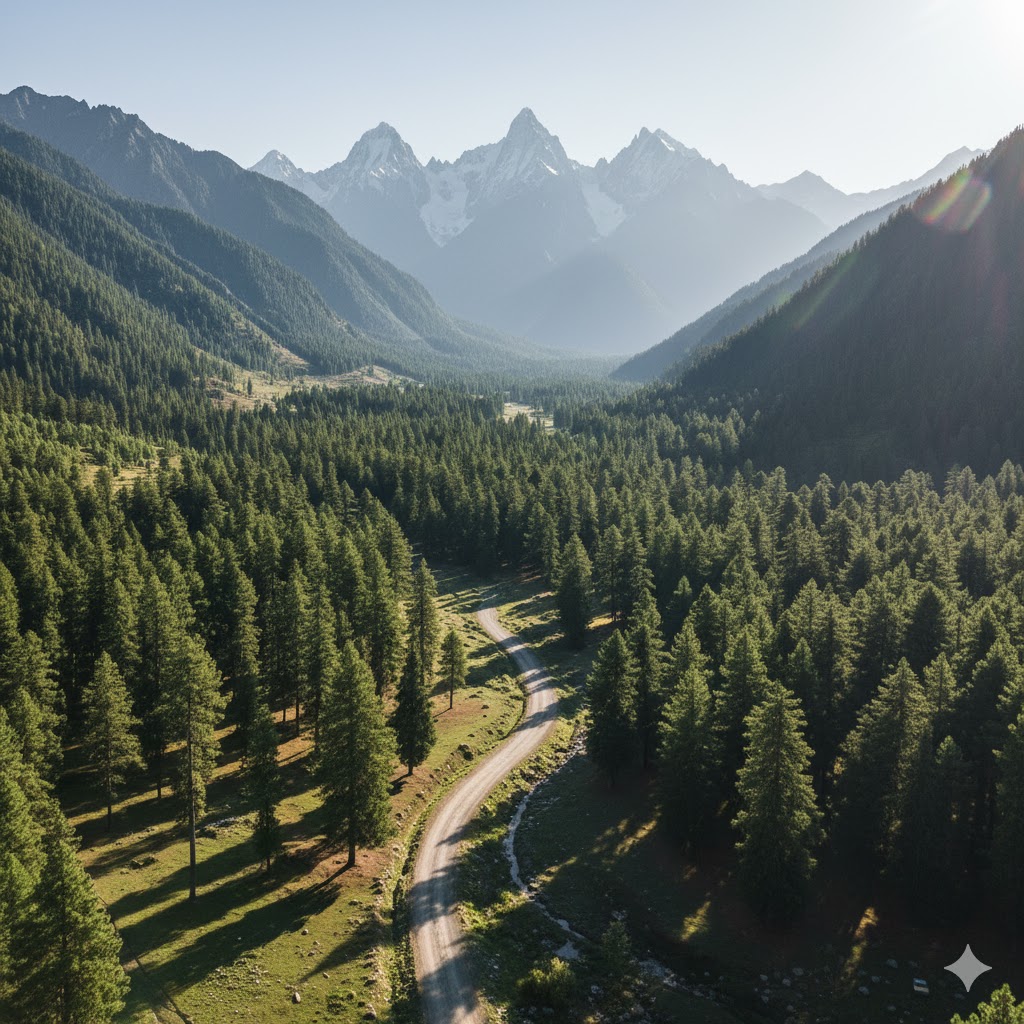
4. Deosai Plains Route: Skardu to Deosai National Park
The Deosai Plains route is one of the most unique in Pakistan, offering vast, open landscapes, rolling plains, and wildlife sightings. Known as the Land of Giants, Deosai National Park is one of the highest plateaus in the world.
Highlights:
- Wildlife: Home to Himalayan brown bears, ibex, and golden eagles.
- Sheosar Lake: A pristine alpine lake in the heart of the plains.
- Panoramic Views: Endless open skies and flat plains that contrast with the towering mountains around.
Hidden Gems:
- Camping spots near Sheosar Lake for overnight stargazing.
- Trekking trails leading to less-visited plateaus for photography.
Local Tips:
- Access is usually June to September due to heavy snowfall in winter.
- Bring all essentials — food, water, and camping gear — as facilities are limited.
- Hire a local guide if you plan to trek deep into the park.
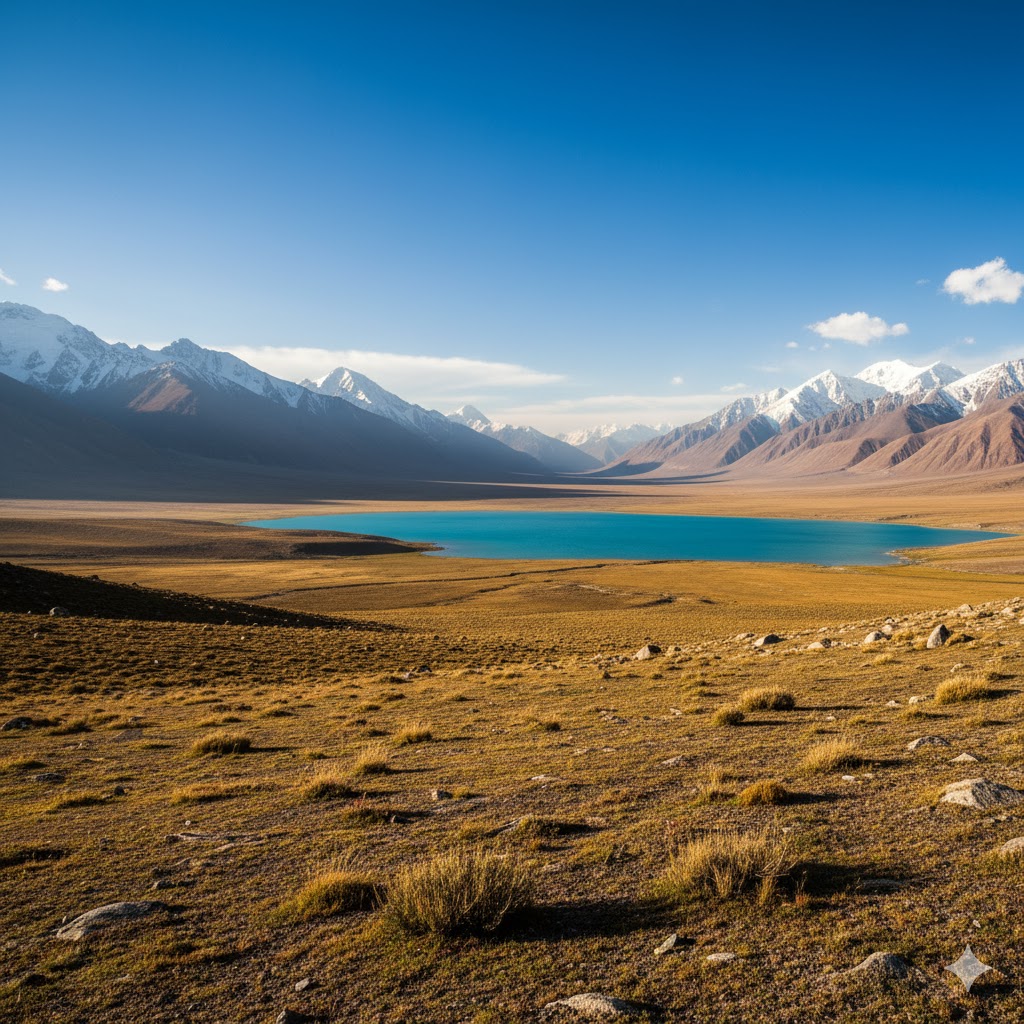
See More:
- Hunza travel guide with accommodation and local tips.
- Full Skardu guide including K2 base camp treks.
Sources:
- Gilgit-Baltistan Tourism Official Website — Official tourism information.
- Pakistan Tourism Development Corporation — Government travel resources.
- Hunza Valley Info — Local insights and travel tips.
5. Shigar Valley Route: Skardu to Shigar
Shigar Valley is often called the “gateway to Karakoram peaks.” The route from Skardu winds through rivers, orchards, and traditional Balti villages, offering travelers a blend of natural beauty and cultural immersion.
Highlights:
- Shigar Fort: A restored 17th-century fort turned heritage hotel and museum.
- Shigar River: Pristine waters flanked by green fields and mountain scenery.
- Gateway to K2 Trekking Routes: Many expeditions pass through Shigar.
Hidden Gems:
- Traditional Balti homes with intricately carved wooden architecture.
- Small fruit orchards offering seasonal apricots, cherries, and apples.
Local Tips:
- Summer (June–September) offers the best road conditions.
- Use a 4×4 vehicle for narrow stretches near rivers.
- Hire a local guide to explore trekking paths or hidden villages.
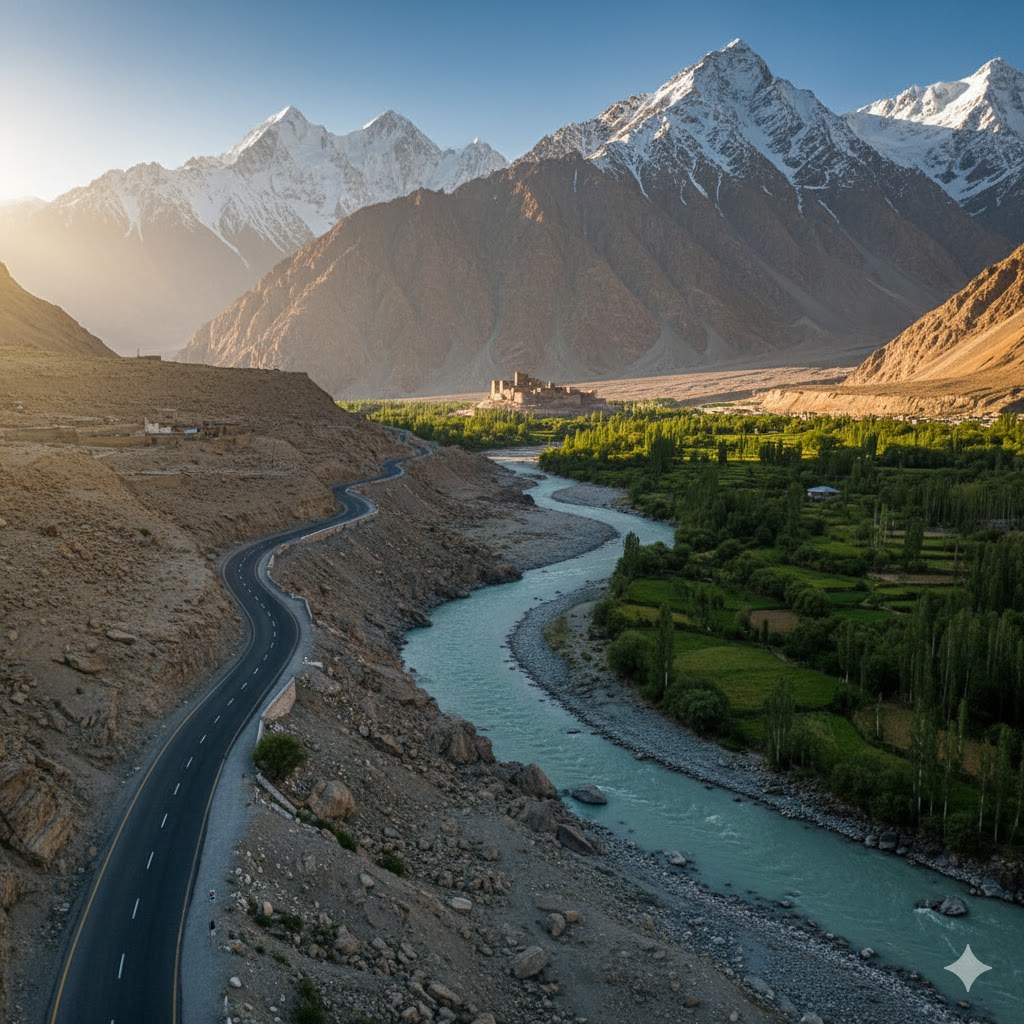
6. Khaplu Valley Route: Skardu to Khaplu
Khaplu Valley, located northeast of Skardu, is a serene destination with lush meadows, rivers, and snow-capped peaks. The road itself is an attraction, featuring stunning landscapes at every turn.
Highlights:
- Khaplu Fort: A historical fort-turned-museum showcasing Baltistan’s heritage.
- Chaqchan Mosque: One of the oldest mosques in the region, reflecting early Islamic architecture.
- Scenic Meadows: Rolling green fields with grazing livestock and flower-filled valleys.
Hidden Gems:
- Small waterfalls along the road offering picnic spots.
- Local markets with handmade woolen garments and handicrafts.
Local Tips:
- Best visited in summer months, as winter roads can be blocked due to snow.
- Carry local cash; small shops may not accept cards.
- Stay overnight in guesthouses to experience authentic Balti hospitality.
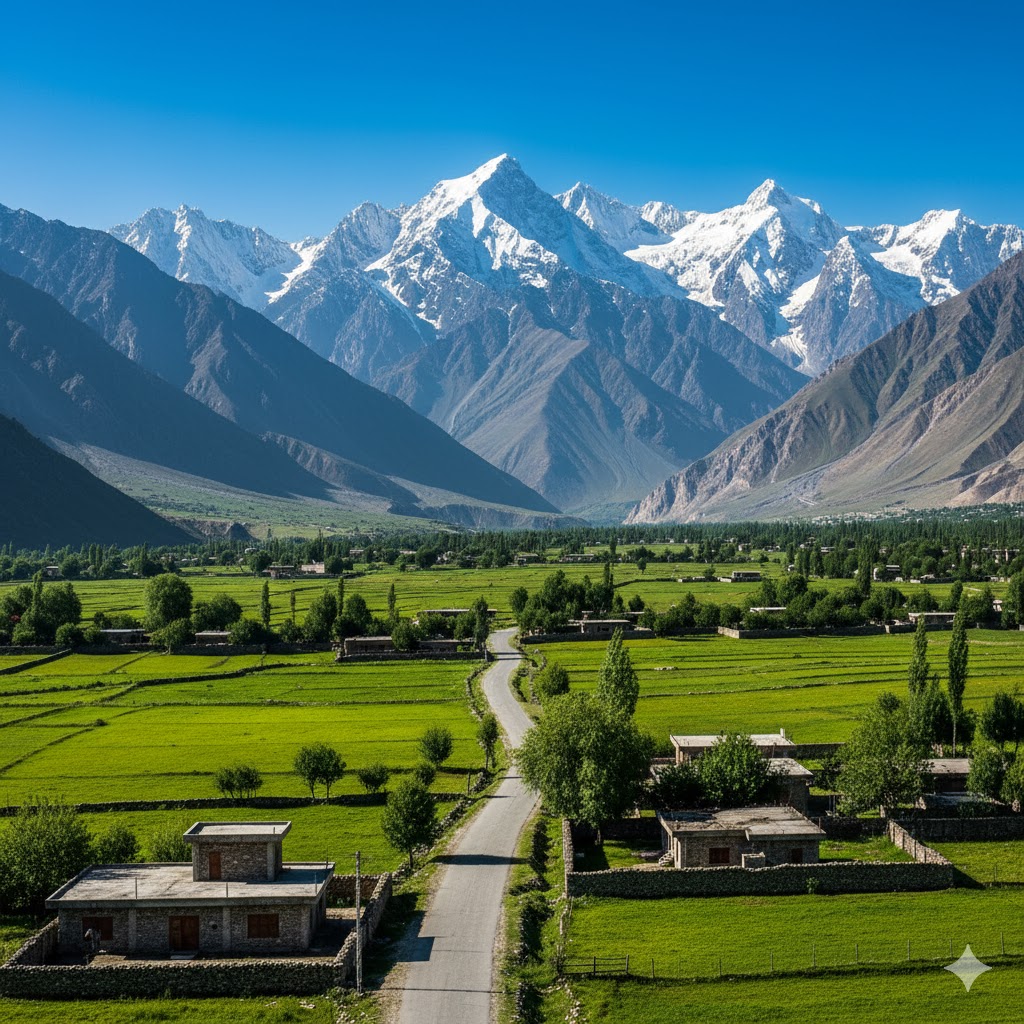
7. Passu to Khunjerab Pass Route: The High-Altitude Adventure
One of the most iconic and adventurous routes in Pakistan, the Passu to Khunjerab Pass drive along the Karakoram Highway is breathtaking. This route crosses the Pak-China border and showcases the region’s dramatic high-altitude landscapes.
Highlights:
- Passu Cones: Majestic pointed peaks lining the road.
- Khunjerab Pass: The highest paved international border crossing in the world at 4,693 meters.
- Hunza River: The winding river adds contrast to rugged mountains.
Hidden Gems:
- Small settlements like Sust, known for local handicrafts and traditional life.
- Opportunities to spot ibex and other high-altitude wildlife along the route.
Local Tips:
- Altitude preparation is essential; carry water and light snacks.
- Best visited May to September, as heavy snowfall closes the pass in winter.
- Start early to maximize daylight for photography and sightseeing.
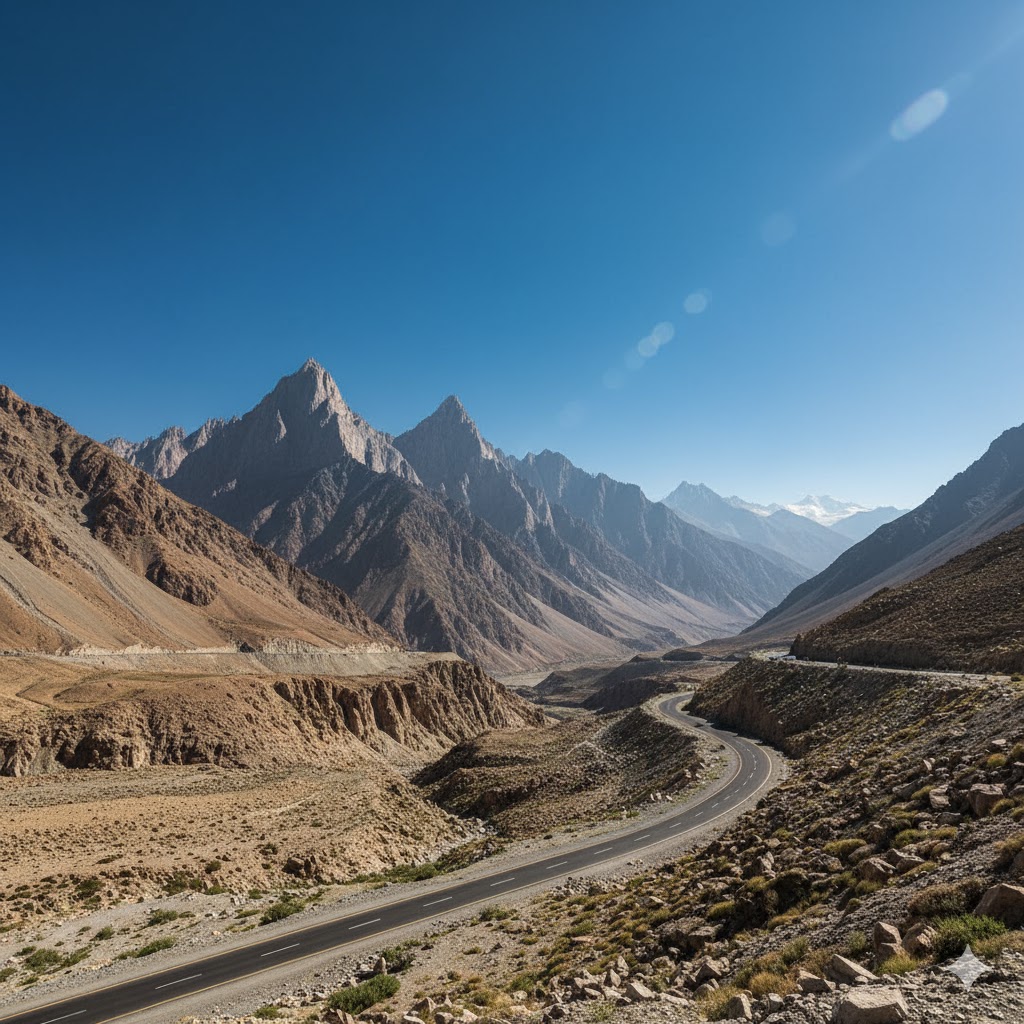
8. Satpara Road: Skardu to Shigar via Satpara Lake
The route connecting Skardu to Shigar via Satpara Lake is both scenic and tranquil. It passes pristine lakes, orchards, and open meadows, making it perfect for photography and leisurely drives.
Highlights:
- Satpara Lake: A turquoise lake fed by surrounding glaciers, offering boating and fishing.
- Skardu Hills: Rolling hills with panoramic views of Skardu town and valley.
- Shigar Fort Approach: Roads gradually climb towards Shigar Valley, passing small villages.
Hidden Gems:
- Lakeside picnic spots rarely crowded with tourists.
- Glacial streams along the road perfect for photography.
Local Tips:
- Visit during summer and early autumn for the clearest views.
- A 4×4 vehicle is recommended for narrow mountain stretches.
- Combine with a short hike around Satpara Lake for a complete experience.
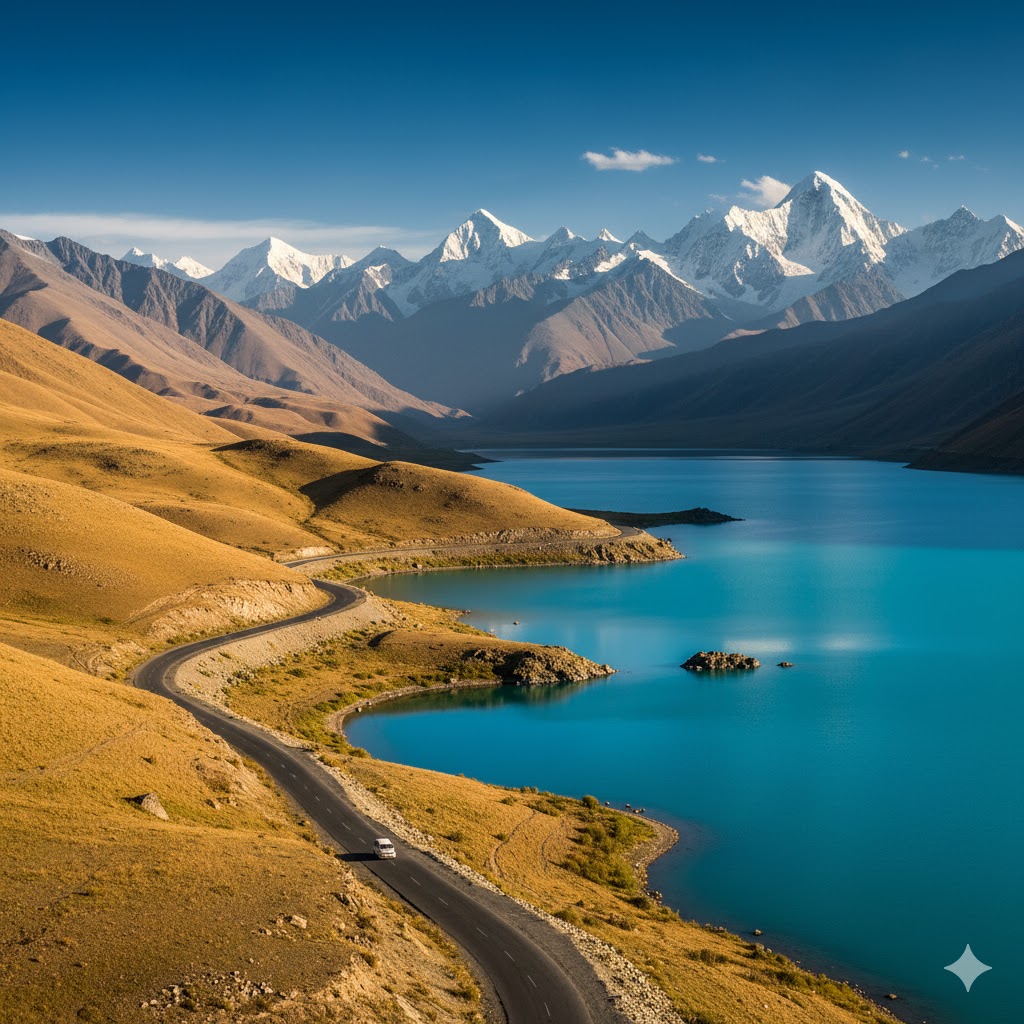
9. Skardu to Deosai via Sheosar Lake
The route from Skardu to Deosai Plains via Sheosar Lake is a must-visit for adventure seekers and nature photographers. This drive combines high-altitude plains, glacial streams, and a sense of untouched wilderness.
Highlights:
- Sheosar Lake: A turquoise alpine lake surrounded by mountains, considered one of the most beautiful in Pakistan.
- Deosai Plains: Vast open plateau providing panoramic landscapes and wildlife spotting opportunities.
- Himalayan Brown Bears: Often spotted at a safe distance in their natural habitat.
Hidden Gems:
- Lesser-known trekking paths around the lake that lead to elevated viewpoints.
- Seasonal wildflowers carpeting the plains in spring.
Local Tips:
- Access is usually limited to June–September due to snow in winter.
- Carry warm clothing and camping gear for overnight stays.
- Hire a local guide for wildlife observation and safe navigation.
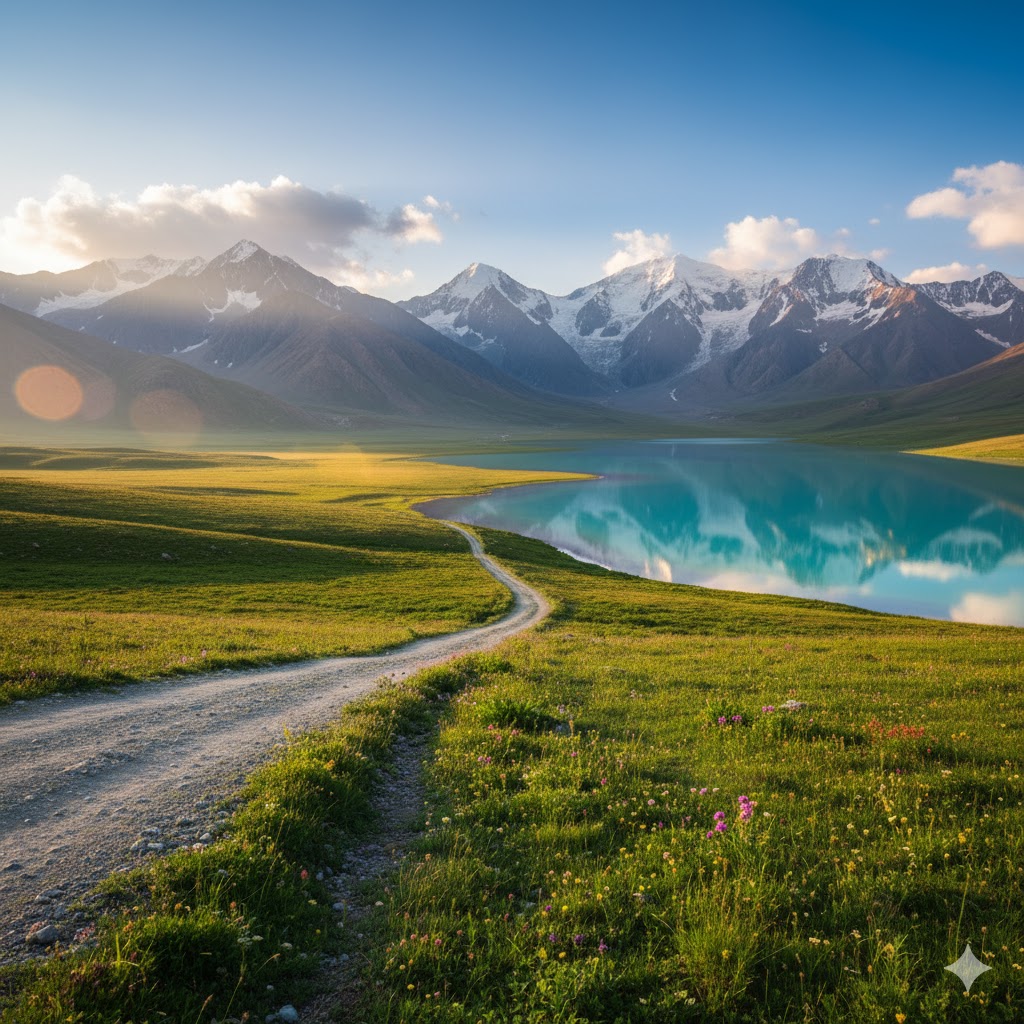
10. Gupis to Yasin Valley Route
The Gupis to Yasin Valley route is a scenic gem for travelers looking to explore less-traveled parts of Gilgit-Baltistan. Winding through narrow valleys and high passes, this route offers dramatic landscapes and rich cultural encounters.
Highlights:
- Yasin Valley: Known for its orchards, historic forts, and traditional villages.
- Khowar Culture: Experience local language, music, and traditional cuisine.
- Naltar and Gupis Views: Panoramic views of distant peaks and forests.
Hidden Gems:
- Visit local handicraft workshops where traditional weaving and woodwork are showcased.
- Small mountain streams and natural pools along the route for refreshing stops.
Local Tips:
- Best visited in summer and early autumn.
- Roads can be rugged; a 4×4 vehicle is recommended.
- Respect local customs when visiting villages; photography permissions are appreciated.
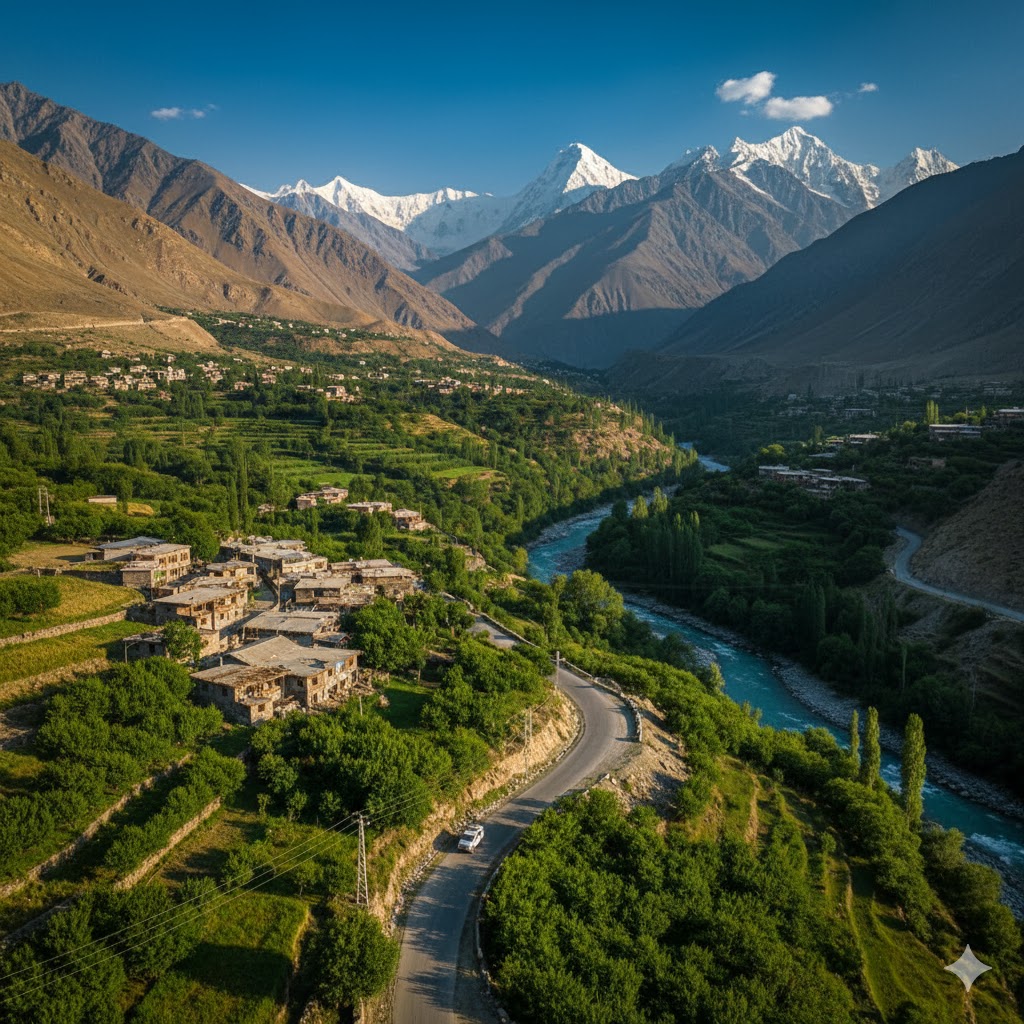
11. Gilgit to Naltar via Karimabad
This route offers a combination of valley views, river scenery, and alpine landscapes. Passing through the bustling town of Karimabad in Hunza, travelers experience both cultural vibrancy and natural beauty.
Highlights:
- Karimabad: Hub of Hunza Valley with local markets, historical forts, and cafes.
- Naltar Lakes: A cluster of turquoise lakes surrounded by pine forests.
- Hunza River Views: The winding river creates picturesque photography opportunities.
Hidden Gems:
- Scenic viewpoints along small side tracks that reveal the Hunza Valley panorama.
- Local apricot orchards where seasonal fruit can be sampled.
Local Tips:
- Ideal travel time: May to October.
- Combine with Hunza Valley sightseeing for a full-day trip.
- Carry camera and binoculars for wildlife and bird spotting.
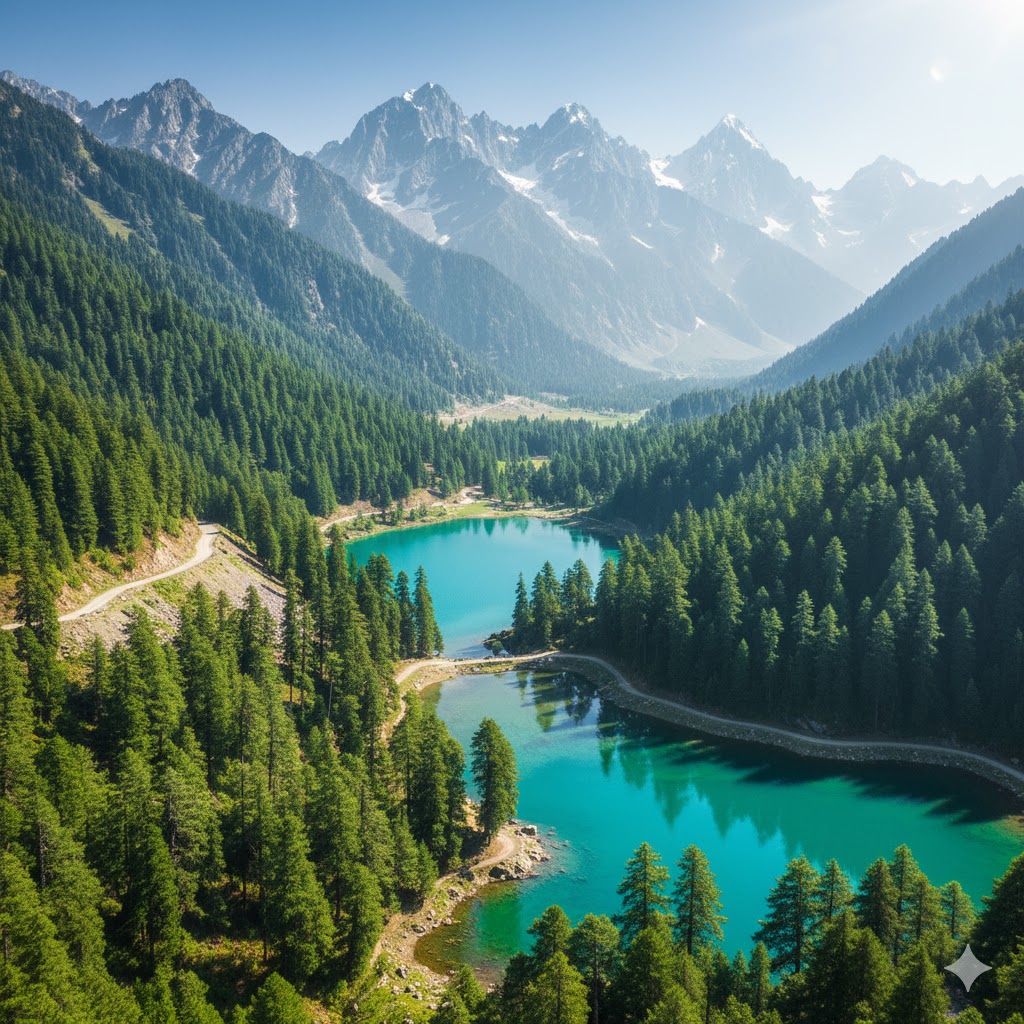
12. Gilgit to Phandar Lake Route
Phandar Lake, located in Ghizer District, is a serene alpine lake surrounded by mountains and forests. The route from Gilgit to Phandar Lake offers travelers a peaceful alternative to more crowded destinations.
Highlights:
- Phandar Lake: Crystal-clear waters reflecting the surrounding mountains.
- Ghizer Valley Views: Rolling hills, terraced fields, and traditional settlements.
- Fishing and Boating: Opportunities for local angling experiences.
Hidden Gems:
- Small rivers and streams along the way perfect for a picnic or photography stop.
- Traditional wooden houses in nearby villages showcasing local architecture.
Local Tips:
- Best visited June to September for clear weather.
- Roads are partially gravel; a high-clearance vehicle is preferred.
- Bring picnic supplies and plan for a half-day to full-day excursion.
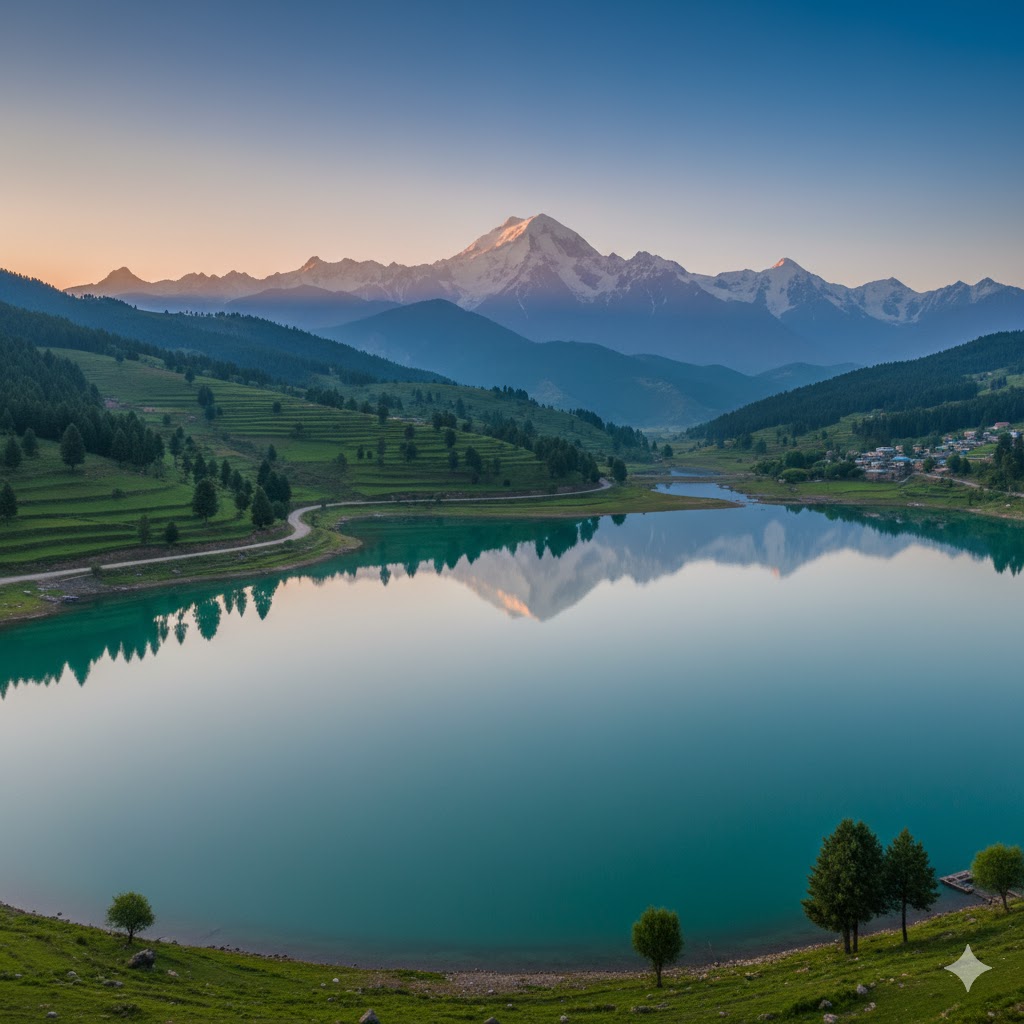
13. Chilas to Fairy Meadows via Nanga Parbat Base Camp
Fairy Meadows, at the base of Nanga Parbat, is often described as one of the most magical places on earth. The route from Chilas is both challenging and rewarding, passing through mountains, rivers, and alpine meadows.
Highlights:
- Fairy Meadows: Lush green plateau with unparalleled views of Nanga Parbat.
- Raikot Bridge and Jaglot: Scenic river crossings with spectacular mountain vistas.
- Trekking Routes: Short treks from Raikot Bridge lead to camping areas with panoramic views.
Hidden Gems:
- Local shepherd settlements and meadows full of wildflowers.
- Sunset and sunrise points offering breathtaking photography opportunities.
Local Tips:
- Access via jeep from Raikot Bridge; trekking required for final stretch.
- Visit June to September; winter roads are snowbound.
- Carry camping gear, food, and warm clothing.
- Hire a local guide for safe trekking and to learn about flora, fauna, and local legends.
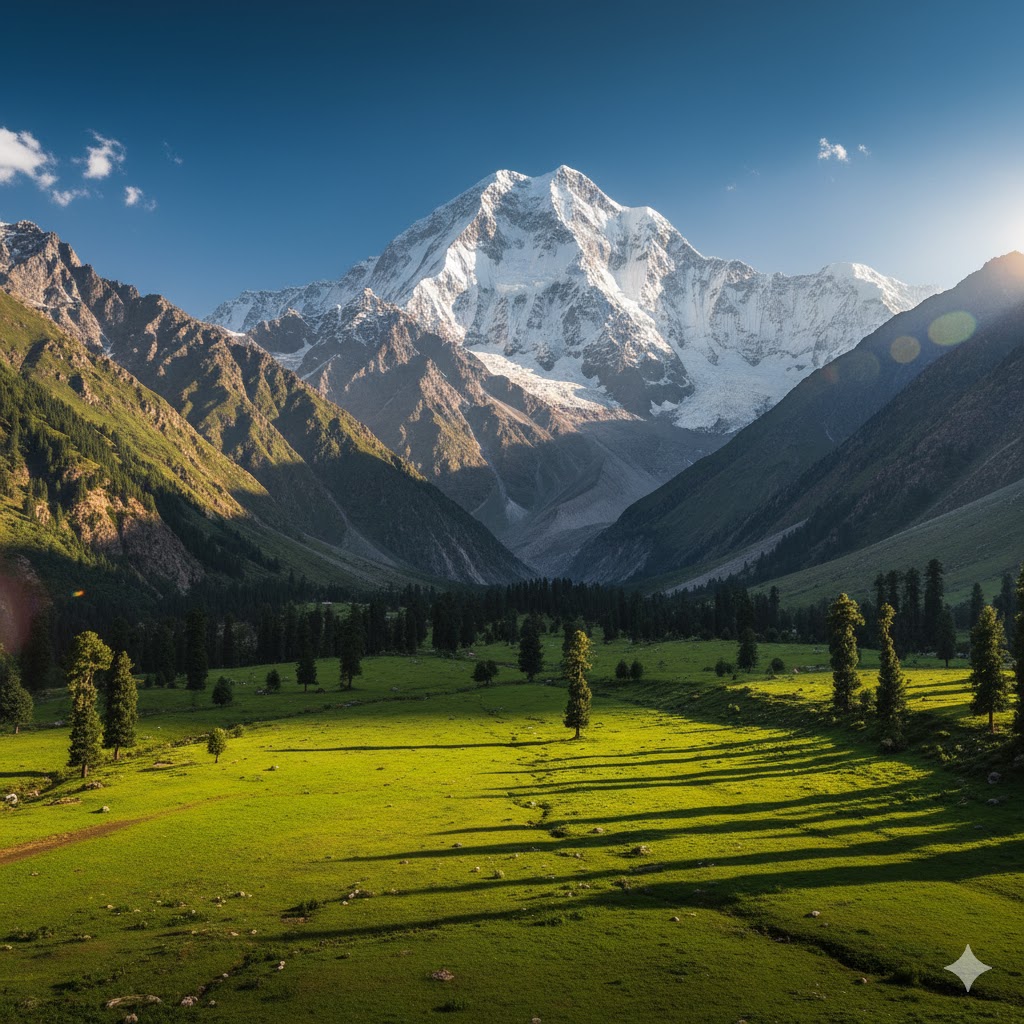
14. Passu Glacier Route
The Passu Glacier route is an exciting addition for adventure travelers. Starting from Passu Village, this route leads to the glacier, offering dramatic scenery of icefalls, moraines, and towering peaks.
Highlights:
- Passu Glacier: Stunning glacier with crevasses and ice cliffs visible from safe vantage points.
- Passu Cones: Iconic jagged peaks lining the route.
- Hunza River Views: Meandering river alongside the glacier for photography contrast.
Hidden Gems:
- Short trails along moraines providing unique glacier perspectives.
- Local shepherd camps along the approach where travelers can experience mountain culture.
Local Tips:
- Best accessed May to September; avoid heavy snow periods.
- Use sturdy hiking shoes; the glacier terrain is uneven.
- Carry water, snacks, and a camera for panoramic shots.
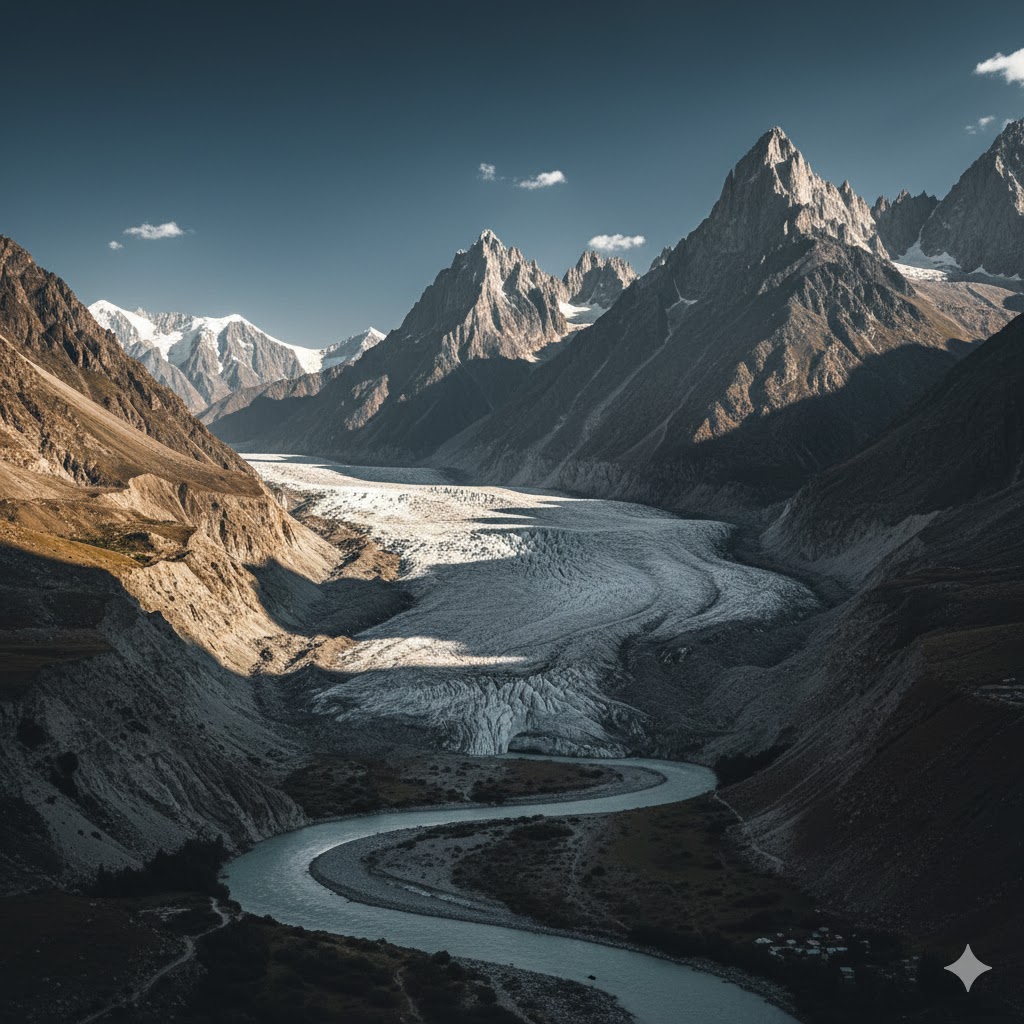
15. Gilgit to Ishkoman Valley Route
Ishkoman Valley, in Ghizer District, is a less-visited treasure with vast meadows, glacial rivers, and a serene atmosphere. The road from Gilgit takes travelers through high mountains, small villages, and fertile fields.
Highlights:
- Yasin and Ishkoman Rivers: Clear glacial waters carving through the valley.
- Village Life: Traditional wooden houses and terraced farming.
- Alpine Meadows: Ideal for camping, photography, and wildlife spotting.
Hidden Gems:
- Visit small fruit orchards in local villages.
- Explore side trails leading to glacial streams and small waterfalls.
Local Tips:
- Travel June to September for the best road conditions.
- A high-clearance vehicle is recommended due to rugged terrain.
- Engage with locals to learn about traditional culture and festivals.
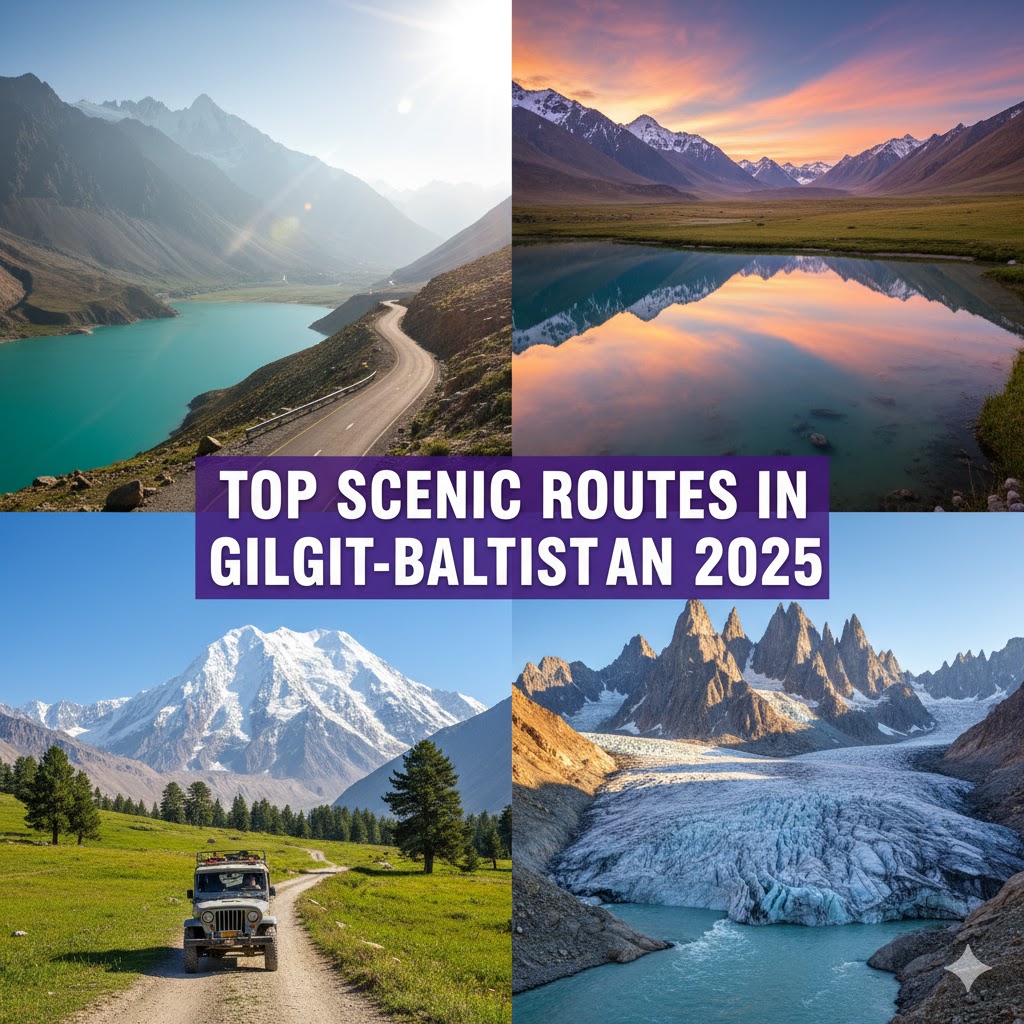
Final Travel Tips for Gilgit-Baltistan Scenic Routes
- Best Time to Visit:
- Spring (April–June): Blooming flowers and pleasant weather.
- Summer (July–September): Clear skies, all routes accessible, ideal for trekking.
- Autumn (October): Stunning golden landscapes; fewer tourists.
- Transportation:
- 4×4 vehicles recommended for mountainous routes.
- Local jeeps available for Fairy Meadows, Deosai, and remote valleys.
- Accommodation:
- Guesthouses and small hotels in towns like Skardu, Gilgit, and Karimabad.
- Camping possible in Deosai, Fairy Meadows, and some alpine meadows.
- Safety:
- Carry warm clothes even in summer; temperatures can drop sharply at high altitudes.
- Stay hydrated and carry snacks for long drives.
- Hire local guides where trekking or high-altitude navigation is required.
- Photography & Wildlife:
- Sunrise and sunset offer the best lighting for valley and mountain photography.
- Respect wildlife; observe from a safe distance.
Traveler Guide:
Gilgit-Baltistan’s scenic routes are a feast for the senses. From turquoise lakes and alpine meadows to towering glaciers and ancient villages, every road tells a story of nature, culture, and adventure. Travelers who explore these routes can experience the true magic of Pakistan’s northern regions, whether on a road trip, trekking adventure, or photography expedition.
Plan your visit carefully, respect local customs, and always prioritize safety to make your journey memorable.

